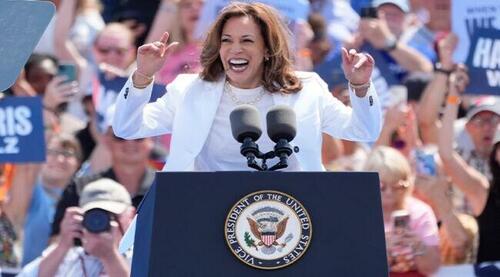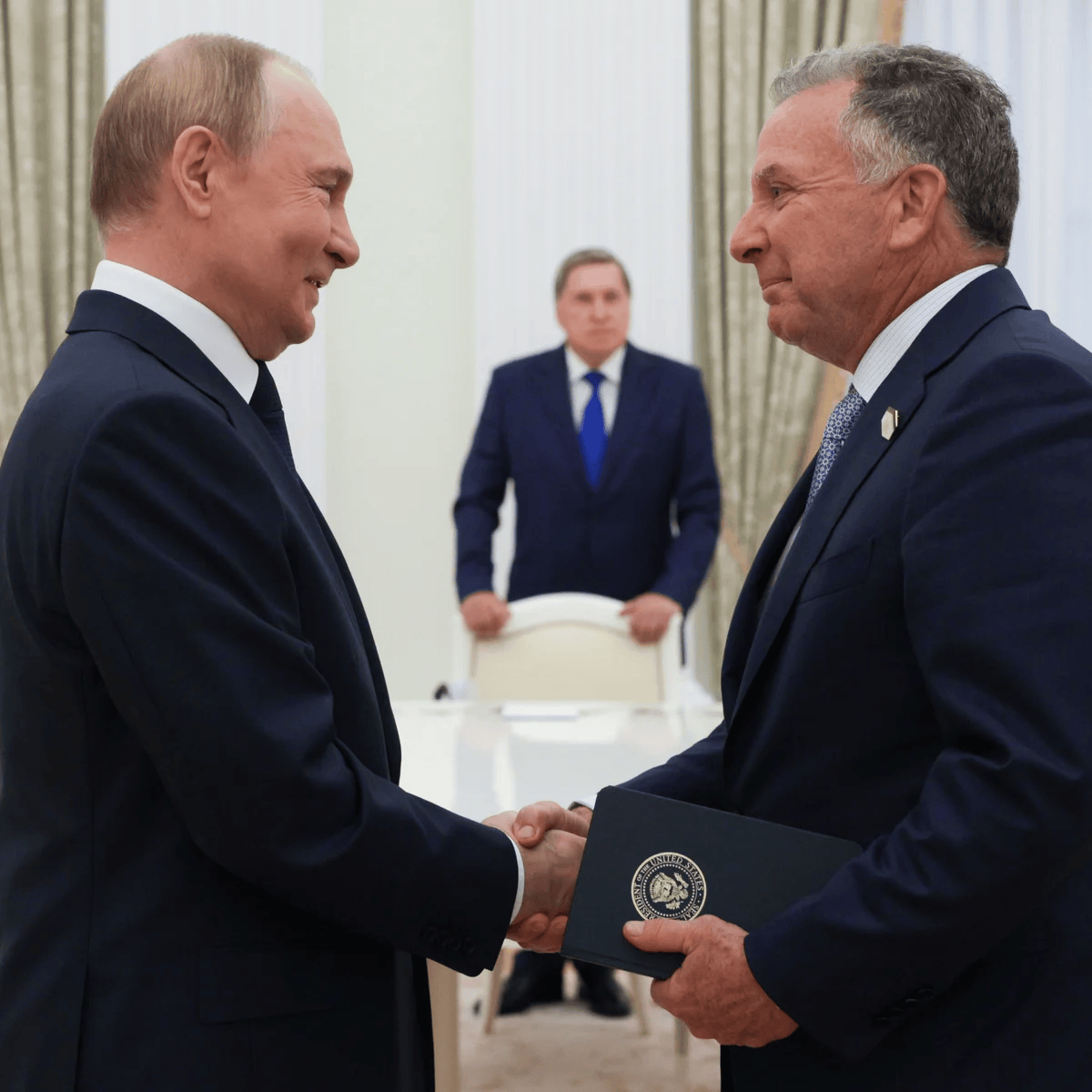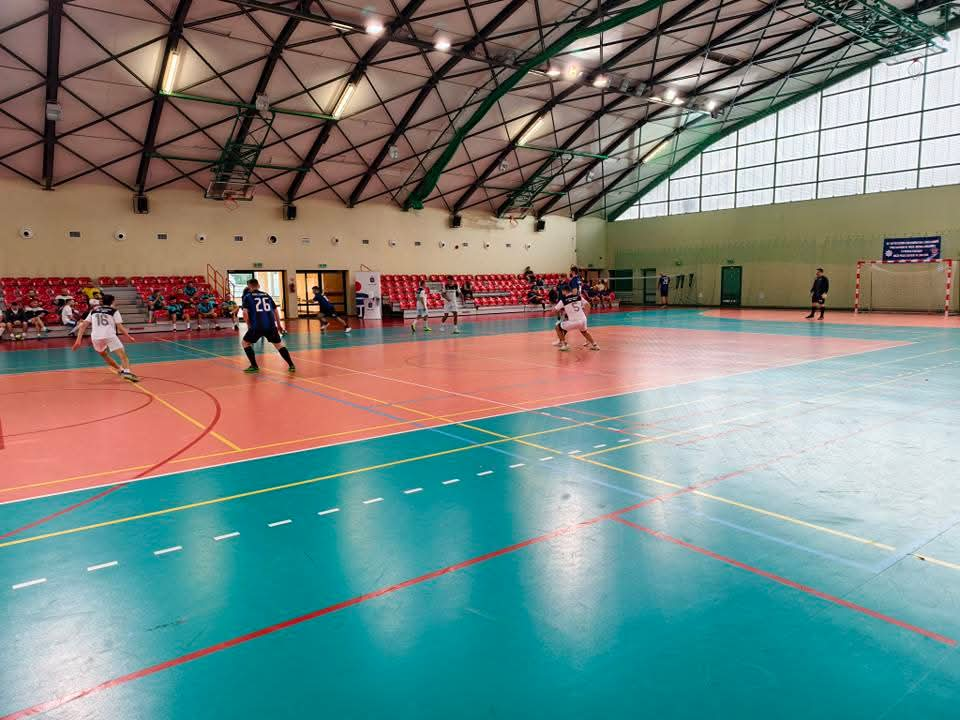
Will The Fed Get Kamala Elected?
Authored by James Rickards via DailyReckoning.com,
The Aug. 5 mini-crash was a potent reminder to investors that stock markets aren’t a one-way street.
It wasn’t the end of the world. Market indexes down 3.0% in a day is a big deal, but it bears no comparison to October 1929 when the stock market fell 21% over two days or October 1987 when the stock market fell 21% in one day.
What caused the Aug. 5 mini-crash? There are several suspects. The employment report issued on Friday, Aug. 2 showed a decline in job creation and an uptick in the unemployment rate.
Neither move was extreme but it got the markets’ attention. In fact, the Aug. 5 decline actually started on Aug. 2, giving the two-day decline a greater impact.
It’s also the case that late July and early August was when many companies, especially Big Tech, reported their earnings for the quarter ending June 30, and offered their forward guidance.
Hey, AI: Show Me
Many of these reports showed huge expenditures for artificial intelligence (AI) with little or no gains in revenue. That was enough to cause market analysts and investors to reprice the entire sector.
This “show me” attitude toward AI drove many huge stocks such as Nvidia and Samsung lower even before the two-day rout on Aug. 2 and 5.
Finally, there’s ample evidence that the economy is now in a recession. There’s something much bigger than the markets behind all of this. It’s the economy. I’ve been warning about a recession for a long time — now it’s here.
Last Friday’s unemployment report was a sign. Still, unemployment is a lagging indicator. It means the recession probably began in June or even May. We won’t know for a few more months when the National Bureau of Economic Research makes its unofficial “official” call.
This recession could be severe based on excess inventories (that need to be dumped) and a host of other technical indicators. A protracted recession is consistent with my forecast for a long, slow grind down in stocks as discussed below.
What Comes Next
Just to be clear, Aug. 5 was not the “big one.” A crash of 25% or more in a compressed period of a few weeks (similar to what we saw in March–April 2020) is always possible, but this correction has a dynamic that suggests it’ll feel for a bottom and then settle down.
The “buy the dip” crowd are still around and they’ll be dipping their toes in the water on a continual basis. That doesn’t mean a sudden rally, but it could mean the market will bounce around the new bottom with those needing cash (or just cautious) getting out and the bottom-feeders getting in.
The timing of crashes is hard to predict, even when you know they’re coming. But the aftermath of a crash is even harder to predict. The real impact of the Aug. 5 mini-crash was the increase in volatility.
In place of steady gains, investors should now expect big up and down days within a larger downward trend.
Worse Than a Crash
We may actually be in for something worse than a crash. We may be in for a long, slow grind to a new bottom that could be down 70% or more from the top (to, say, Dow 12,000).
Investors are familiar with the Dow crash of 21% in 1929 but fewer know that the bottom did not come until June 1932, down over 80% from the 1929 high.
Something similar happened in the 1970s where the Dow was 1,000 in 1969 and 1,000 in 1982. It went nowhere in 13 years (with volatility along the way).
Adjusted for inflation, the 1982 index was worth less than half the 1969 index so in real terms you lost over 50% of your wealth during those 13 years before a new bull market began.
The problem with a 25-year recovery (1929–1954) or a 13-year recovery (1969–1982) is that many people don’t have the time to recover. Be prepared for that sort of outcome.
A Cut Is Coming
Here’s what I recently wrote about the prospect of a Federal Reserve rate cut in September: “The best way out for the Fed is to keep their heads down and do nothing. That’s what I expect the Fed to do absent an extreme market meltdown or a sharp spike in unemployment.”
Well, we’ve just had the meltdown and spike in quick succession so it’s clear the Fed will cut rates in September.
But that’s not a free lunch. My original formulation that the Fed wouldn’t cut was based on the fact that inflation was still too high. That’s still true. So the Fed will be throwing in the towel on inflation in order to calm stock markets.
The Fed may end up with the worst of both worlds — continuing inflation and recession known as “stagflation.”
And don’t hold your breath waiting for the “Fed put.” The Fed put is real, but it only comes out when stock markets are crashing, say, 20% or more in a few weeks or when there’s a bank panic or both.
We’re not there yet. It could happen, but the situation right now is not bad enough for the Fed to intervene apart from a 0.25% cut in September. Don’t look for an intermeeting cut or a 0.50% cut.
As I’ve said before, the Fed doesn’t want you to panic, but they don’t want to appear panicky themselves.
The Politics of a September Rate Cut
A September rate cut puts Powell on a direct collision course with Donald Trump. That’s because the rate cut will come just six weeks ahead of Election Day on Nov. 5.
It’ll probably give the stock market a boost (in many ways the mere expectation of a rate cut has already boosted stocks following the Aug. 5 mini crash).
In turn, this will boost the Democrats’ chances of winning the presidential election. Trump has publicly said that Powell shouldn’t cut rates so close to the election, and to do so should be considered a kind of election interference by the supposedly apolitical Fed.

Powell may be able to justify a rate cut using an economic slowdown and stock market volatility as cover. But if Trump wins the election, there may be a high price for Powell and the Fed to pay for this political rate cut.
In the first place, all seats on the Fed Board of Governors are selected by the president. Trump could nominate allies like Judy Shelton, Larry Kudlow and Monica Crowley to fill those seats.
It’s not clear Trump could fire Jay Powell (it’s possible but it has never been done before so the matter could be litigated) but Powell’s term as chair is up on May 15, 2026, so Trump could replace him relatively early in his second term.
Would Trump Neuter the Fed?
Trump could also seek legislation (assuming Republicans control both Houses of Congress) that could reduce Fed powers and their autonomy.
This could include repealing the “dual mandate” that requires the Fed to target unemployment and inflation at the same time (impossible to do but the Fed goes through the motions).
This would return the Fed to its original purpose of sound money and lender of last resort. So there’s a lot at stake if Powell goes ahead with his political rate cut.
If Trump wins and Republicans take both houses of Congress, we could be dealing with a neutered Fed.
That might be negative if the Fed were truly apolitical — the Fed should be independent of politics.
But since the Fed isn’t apolitical, a neutered Fed would be good for the economy and the American people overall.
Tyler Durden
Fri, 08/16/2024 – 11:40


















